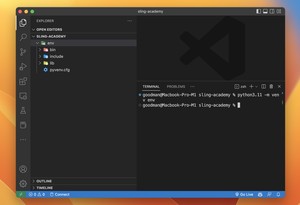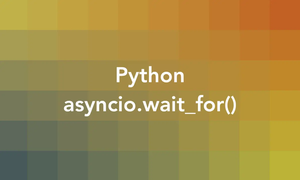Introduction
Python’s asyncio module, designed for writing concurrent code using the async/await syntax, has become a cornerstone of modern Python applications. With Python 3.11, the asyncio API continues to evolve, becoming more powerful and user-friendly. One useful yet often overlooked component of this module is asyncio.Event, a state flag that tasks can wait for, allowing for clean and efficient synchronization between different parts of an asyncio application. This tutorial will delve deep into asyncio.Event, explaining its nuances through practical examples.
But first, what is an asyncio.Event? An Event object mirrors a classic threading event but is designed to work seamlessly within the event loop of an asyncio program. It allows for the coordination of coroutine execution, enabling scenarios where a routine waits for an event to be set by another before proceeding.
Understanding asyncio.Event
An asyncio.Event can be thought of as a simple flag that can be either set (True) or clear (False). Initially, an Event object is false. When the event’s set() method is invoked, the state turns true, and all coroutines waiting for it to become true proceed. Conversely, clear() resets the flag to false, causing subsequent wait() operations to block until the flag becomes true again.
import asyncio
event = asyncio.Event()
async def waiter():
print('Waiting for the event to be set.')
await event.wait()
print('The event was set.')
async def setter():
print('Setting the event in 2 seconds.')
await asyncio.sleep(2)
event.set()
async def main():
await asyncio.gather(waiter(), setter())
asyncio.run(main())This basic example illustrates how an Event can synchronize two coroutines: the waiter coroutine waits until the setter coroutine sets the event.
Advanced Synchronization Patterns
Next, let’s explore more sophisticated uses of asyncio.Event. Imagine a scenario where multiple tasks depend on a periodic signal to perform their operations. Instead of using a busy loop or sleep, we can efficiently manage this with an Event.
event = asyncio.Event()
async def periodic_signaller(interval):
while True:
await asyncio.sleep(interval)
event.set()
event.clear()
async def dependent_task(id):
while True:
await event.wait()
print(f'Task {id} performing operation.')
async def main():
tasks = [dependent_task(i) for i in range(5)]
signaller = periodic_signaller(5)
await asyncio.gather(signaller, *tasks)
asyncio.run(main())In this pattern, the periodic_signaller coroutine cyclically sets and clears the event at a given interval, allowing dependent_task coroutines to periodically check in and perform operations. This demonstrates the power of Event for organizing complex synchronization behaviors without tight coupling between tasks.
Tips for Effective Use of asyncio.Event
- Limit Clearing Events: In most scenarios, avoid repeatedly clearing an event. This practice can lead to races where some tasks may miss the event. Prefer resetting the event state explicitly only when it aligns with your application’s logic timing needs.
- Combine with other synchronization primitives: While Event is powerful, it often works best when combined with other asyncio primitives like Locks, Queues, or Conditions. This can offer more granular control over access and execution flow.
- Debugging: When debugging complex synchronization issues in asyncio programs, leverage the logging module or debug mode of the asyncio module (
PYTHONASYNCIODEBUG=1environment variable) to get insights into task states and event loop behavior.
Conclusion
The asyncio.Event primitive in Python’s asyncio module offers a simple yet powerful mechanism for synchronizing asyncio tasks. With Python’s enhancements to the asyncio module, leveraging Event for clean and efficient concurrency patterns in your applications is more accessible than ever. Through the examples and patterns explored in this tutorial, you should now have a solid understanding of how to effectively use asyncio.Event in your next Python project.











